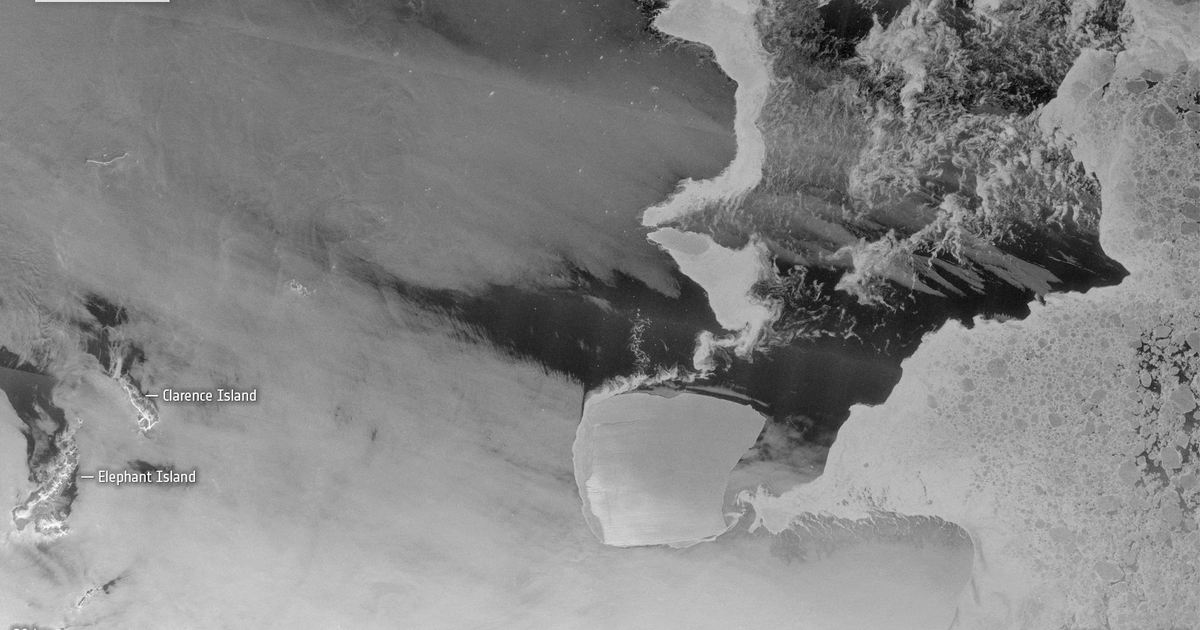[ad_1]
The world’s largest iceberg, A23a, which has an space roughly thrice the scale of New York Metropolis, weighs in at nearly 1 trillion tons, CBS Information associate community BBC Information stories, citing knowledge from the European Area Company (ESA). Utilizing knowledge from the company’s CryoSat-2 mission, a spacecraft that carries a sort of radar in a position to sense how a lot of an iceberg’s mass is above the water, scientists have been in a position to work out details about how a lot is under the water.
A23a broke off from Antarctica in 1986 and nearly instantly received caught after a deep part of it grounded on the seafloor. Not too long ago, it turned dislodged and began drifting once more.
European Area Company
“During the last decade, we’ve got seen a gentle 2.5m (about 8 toes) per yr lower in thickness, which is what you’d anticipate given the water temperatures within the Weddell Sea,” Andy Ridout, a scientist from College School London and the Pure Atmosphere Analysis Council Centre for Polar Statement and Modelling, advised CBS Information associate community BBC Information.
On the transfer as soon as extra, it is nonetheless unclear the place A23a will likely be carried by wind and ocean currents. The big iceberg has reached the tip of the Antarctic Peninsula, the place numerous totally different currents converge.
It is anticipated to float by an space often known as “iceberg alley,” the BBC mentioned, and its observe will have an effect on whichever a part of the ocean and ocean flooring it travels over.
Iceberg’s are “liable for very deep mixing of seawater,” Mike Meredith, a professor from the British Antarctic Survey, advised the BBC.
“They churn ocean waters, bringing vitamins as much as the floor, and, in fact, additionally they drop quite a lot of mud. All this can fertilize the ocean. You may typically see phytoplankton blooms of their wake.”
Thanks for studying CBS NEWS.
Create your free account or log in
for extra options.




